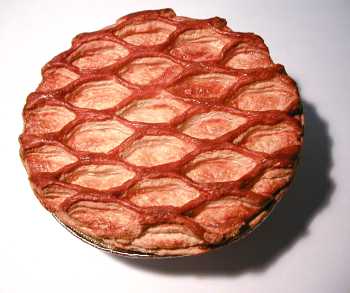
Get a slice of the action with Pi Day Live!
On 14 March at 1.59pm GMT, Marcus du Sautoy will host Pi Day Live, an interactive exploration of the number which has fascinated mathematicians throughout the ages. He wants to rediscover pi using ancient and intriguing techniques, and he needs your help!

Get a slice of the action... (Image from www.freeimages.co.uk)
Everyone at Pi Day Live will be using marbles, pins, maps and other household items to discover pi using methods that range from 3500 to around 250 years old. It’s not all low-tech, though, as they will be using the web to gather everyone’s results live, combining them to find out if they can collectively calculate a more accurate approximation of pi. Will it be possible to derive pi to one, two, three or more, decimal places? Can we do better than the ancient Greeks or have we lost the ability to rediscover this amazing number without using computers?
Mathematicians (and the American House of Representatives) have christened 14 March Pi Day because the date, when written in the US date format, is 3.14. Add the 1.59pm time of the Pi Day Live experiment and you get 3.14159, or pi at around the accuracy Archimedes calculated it over 2000 years ago using simple geometry.
Pi has obsessed generations of mathematicians for millennia because it is integral to one of the most important and elegant geometric objects in nature, the circle. Attempting to calculate an accurate value for this never-ending transcendental number has been one of the big themes running throughout the history of mathematics.
Even though you only need to know pi to 39 decimal places to calculate a circumference the size of the observable universe to the precision comparable to the size of a hydrogen atom, mathematicians have pushed the limits of computing technology to calculate the number to over one trillion digits. How close can Pi Day Live get to this accuracy using ancient techniques?
You can connect with Marcus and Pi Day Live via an Online Lecture Theatre or by watching online on the ‘Big Screen’. If your computer can run YouTube videos then you have what you need to get involved. The event will be recorded and will be available on YouTube afterwards for anyone who can’t take part on the day. Just go to Pi Day Live website to find out more. And you can get live updates and all the pi facts you could ever want on Twitter at and Facebook.
And you can read more about pi on Plus: